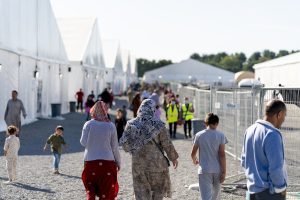Last week, the U.S. Special Inspector General for Afghan Reconstruction (SIGAR) released its 63rd quarterly report, providing an update on U.S. assistance to Afghanistan. In the extended wake of the August 2021 withdrawal of Western forces, subsequent collapse of the Republic government, and the Taliban’s rise to power, these reports have shifted in focus but remain valuable troves of information on a country that has fallen far from U.S. headlines.
The United States, SIGAR notes, “remains the largest donor to the Afghan people.” Since August 2021, $17.19 billion in assistance has been made available to Afghanistan and Afghan refugee programs. This includes $2.8 billion in appropriations for Afghanistan, around $10.8 billion in funding for Defense and State programs including Operation Allies Welcome and Enduring Welcome aimed at bringing and settling Afghan allies in the U.S., and $3.5 billion in frozen Afghan Central Bank assets transferred to the Fund for the Afghan People (which has, to date, made no disbursements).
The $2.8 billion in appropriations for Afghanistan assistance is primarily directed to the “humanitarian” funding category, with assistance in all categories – humanitarian, development, agency operations, and security – falling precipitously since October 2021. For example, of the $2.8 billion more than half, $1.6 billion, was allocated in fiscal year 2022 (which began in October 2021). In FY2024 only $277 million was funded.
SIGAR’s report dives into specific programs, which is well worth perusing to understand the breadth and scope of assistance efforts – and which efforts have fallen by the wayside as budgets contract. For example, all of the USAID education programs listed in the report ceased to receive funding after FY2022. The USAID programs that continue to have funding into FY2024 include a handful of health programs, one focused on new disease early warning systems and another on urban health; as well as an economic growth program focused on export-oriented competitiveness.
The difficulties in engaging with the Taliban, and concerns about funding being misappropriated if transferred to Taliban control, depress opportunities to work on even humanitarian issues. Taliban policies limiting women’s ability to work are also damaging to these efforts.
The 63rd quarterly report’s essay section focuses on the Afghan diaspora, specifically interviews with 61 members of the diaspora in the United States in four areas that have become major resettlement centers: Houston, Texas; Sacramento, California; Omaha, Nebraska; and Washington, D.C.
One of the themes SIGAR identified was a sense of mourning and betrayal: “Most Afghans resettled in the United States are mourning the loss of the Islamic Republic of Afghanistan. They expressed a sense of betrayal, feeling abandoned personally, and feeling that their country was abandoned by Afghanistan’s leadership and their U.S. partners.” This sense of betrayal extended also to the Afghan Republic government, which some interviewees criticized for its inability to reevaluate the situation and regroup, instead dissolving.
Another theme is the belief among the diaspora that the situation in Afghanistan is deteriorating, and a fear that their extended families still in Afghanistan are at risk. Many described the Taliban’s ideology as imported, foreign to Afghanistan.
Finally, most interviewees, SIGAR said, “also described the new challenges they are facing in the United States. Many of the recently resettled suffer from depression, culture shock, lack of support, and poverty — stresses that are compounded for families separated from their loved ones left behind in Afghanistan.”
Not only are the journeys to the United States arduous, and the pathways paved with finicky bureaucratic steps, but navigating life in the U.S. has proven difficult for some. Many have relied on networks of friends and family, finding refugee resettlement agencies in the U.S. lacking. Once settled, Afghans face myriad difficulties from unemployment to language barriers that serve to deepen mental health issues stemming from trauma and isolation, especially for Afghan women stuck at home in small apartments.
The diaspora members that SIGAR interviewed were reportedly divided over the issue of humanitarian aid to Afghanistan. “While they agreed that there is tremendous hunger and need in Afghanistan, some felt that U.S. assistance, however inadvertently, bolsters Taliban rule.” Another noted, however that U.S. disengagement creates space for America’s competitors.
Later in the report, in recounting recent developments, SIGAR notes that the annual World Happiness Report – compiled by a partnership of Gallup, the Oxford Wellbeing Research Centre, the U.N. Sustainable Development Solutions Network, and an editorial board – ranked Afghanistan as the unhappiest country in the world out of 143 countries. Neighboring countries like Pakistan and Uzbekistan came in at 108th and 47th, respectively.

































